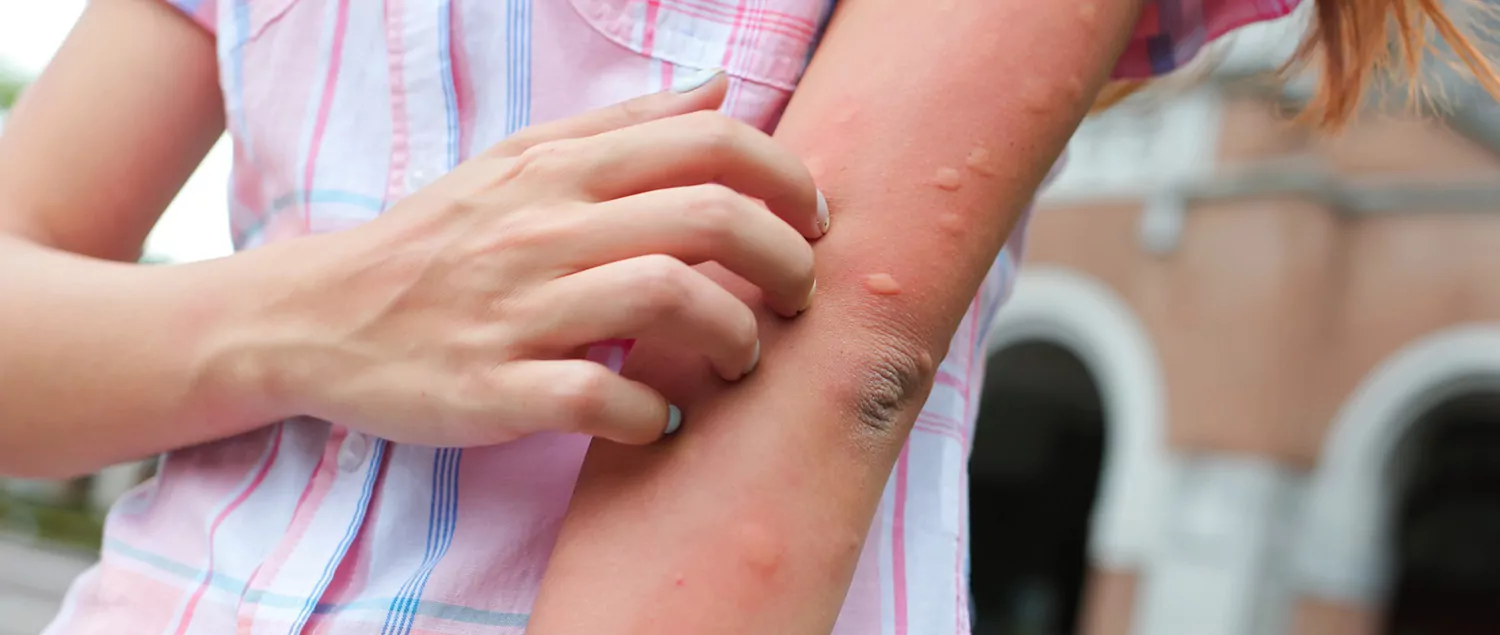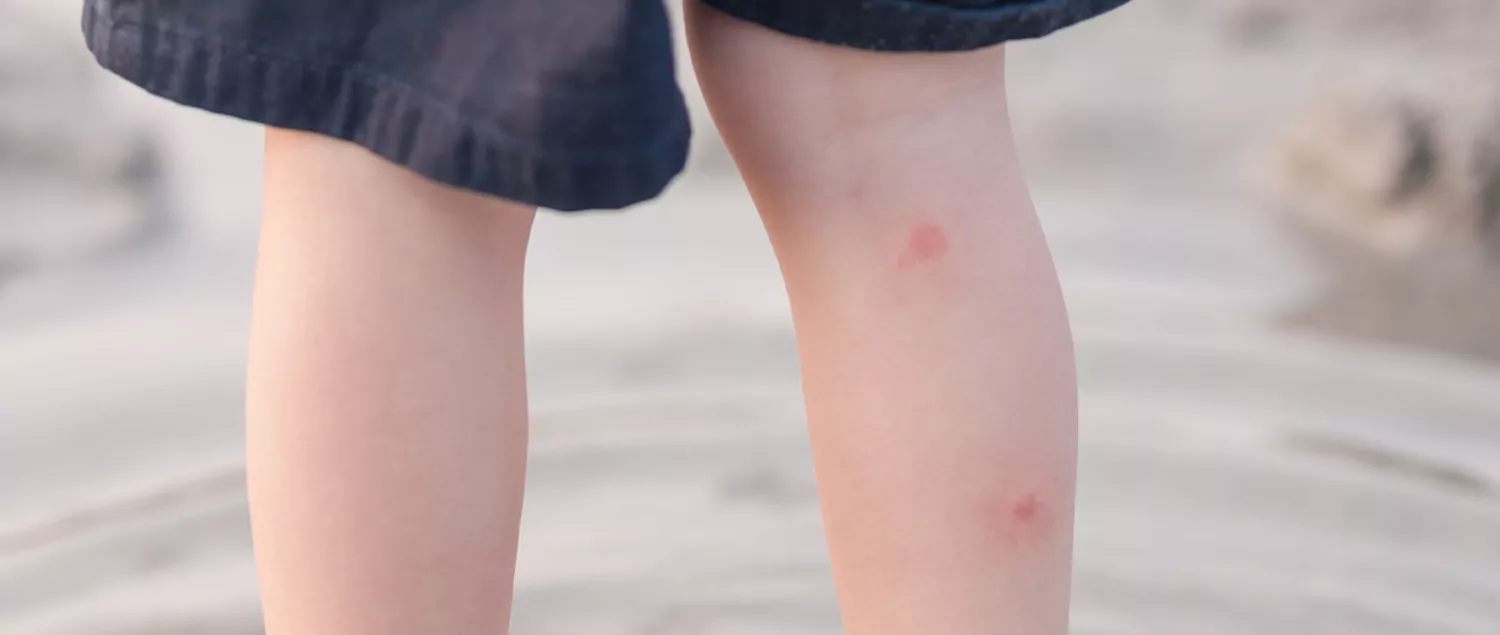Jellyfish Bite
There are thousands of species of jellyfish worldwide. Jellyfish bites are a common problem for people who swim, dive, wade in the water or walk on the beach. Most jellyfish bites are harmless, but some can cause serious complications. The long tentacles emerging from jellyfish can inject the venom of thousands of microscopic barbed needles into the body.
These bites can cause skin irritation, pain, blisters and skin necrosis or cell death. People who are bitten may experience weakness, fever, chills, muscle spasms, nausea and vomiting. In rare cases, some species of jellyfish, such as the box jellyfish, one of the most poisonous species of jellyfish, can cause paralysis or risk life. In most cases, it gets better in a few days or weeks with home treatment under the supervision of a doctor. However, emergency medical care is needed at the time of the bite for possible severe reactions.
What is a Jellyfish Bite?
A jellyfish bite is a reaction that occurs when a jellyfish, a marine species, comes into contact with human skin. They have soft, bell-shaped bodies with long, finger-like structures called tentacles. The bite is usually caused by poisonous secretions found in the jellyfish’s tentacles. The venom also helps them catch food by biting it. They are also painful when touched on the skin by poisonous jellyfish while swimming or walking on the beach. Most jellyfish stings are harmless. But some jellyfish stings can cause serious complications.
How does a jellyfish bite?
Jellyfish have tentacles with thousands of painful cells called nematocysts. Jellyfish fire toxins when people bump into them or rub against them. Jellyfish do not intentionally bite humans. But if you walk past one or accidentally step on it, it may bite you to protect itself. Each nematocyst in the jellyfish tentacle contains spring-loaded barbed threads or tubules. When triggered, large amounts of calcium pass through the jellyfish’s plasma membrane. This causes the pressure inside the nematocyst to increase. The increased pressure causes the threads to unravel and shoot out like little arrows, shooting poison at the unsuspecting victim. This whole process happens very fast. Nematocysts can also send their venom when jellyfish die.
What are the Symptoms of a Jellyfish Bite?
The symptoms of a jellyfish bite depend on the type of jellyfish contacted. In the case of a small jellyfish sting, it may feel a slight pain, itching, burning or throbbing. A jellyfish sting can look like a rash with red, purple or brown spots. Some of the symptoms may include:
- Difficulty breathing
- Chest pain
- Muscle cramps
- Skin blisters
- Numbness or tingling
- Nausea or vomiting
- Difficulty swallowing
- Abdominal pain
- Excessive sweating
The severity of a jellyfish bite often depends on
- Type and size of jellyfish
- Age and general health of the affected person
- Duration of exposure to needles
- How much of the skin is affected
How to recognize a jellyfish bite?
The reaction to a jellyfish sting depends on many variables. Some jellyfish stings cause only minor irritation and some stings can be fatal. Symptoms can appear quickly after contact with jellyfish. These may include:
- Pain and burning sensation
- Redness and swelling
- Rash and blisters
- Shortness of breath and dizziness
- Muscle cramps

What are Jellyfish Species?
Is jellyfish poisonous? As an answer to the question, it can be said that it varies according to its types. There are thousands of different species of jellyfish in oceans around the world. While some are harmless, there are others that you should watch out for and avoid. Here are some of the jellyfish whose stings can cause serious harm:
- Box jellyfish: The box jellyfish is the deadliest jellyfish in the world. Sometimes called sea wasps, they have box-like bodies with tentacles extending from each corner. Box jellyfish live in tropical regions around the world. They are usually found on the north coast of Australia and in the Indo-Pacific Ocean. There are more than 40 species of box jellyfish. The Australian box jellyfish is the most poisonous jellyfish in the world.
- Lion’s mane The lion’s mane jellyfish is the largest jellyfish in the world. They can grow up to more than 90 cm wide and their mane-like tentacles can grow up to 3.5 meters long. The lion’s mane lives in cooler climates in the Arctic Ocean and the North Pacific Ocean. Their name comes from the hundreds of tentacles covered with needles that make up their mane.
- Sea nettle One of the most common jellyfish found along the Atlantic, Pacific and Gulf coasts. It is another large jellyfish that can grow more than 1 meter wide. Each sea nettle has tentacles that can grow up to 180 cm in length.
- Portuguese man of war: Also called a blue bottle jellyfish, this jellyfish has a bubble filled with blue or purplish gas that keeps it above water. They live in the tropical waters of the Atlantic, Pacific and Indian oceans and the Caribbean Sea. Portuguese man-of-war jellyfish have balloon-like buoys that keep them above the water. Beneath the water are long tentacles and polyps that grow up to about 30 feet long.
- Blue jellyfish: Also known as blue fire jellyfish, this jellyfish is a species of the Cyaneidae family. Their long tentacles are covered with poisonous nematocytes. It has a venom that is quite painful to the touch.
- Brown jellyfish: The brown jellyfish is a common species found worldwide, usually in the Mediterranean and Atlantic Ocean. May be brown in color and painful to bite
- Transparent jellyfish: As the name suggests, transparent jellyfish are usually transparent. It has large umbrellas that are thick near the center but gradually taper as they reach the edge of the umbrella.
- Purple jellyfish: Purple jellyfish can have purple and transparent colors and can be found in the Atlantic, Indian and Pacific Ocean. They can be about the size of the palm of an average person. Its bite can cause severe pain and in some cases can lead to allergic reactions.
Jellyfish Bite Treatment
A jellyfish bite requires immediate attention. Here are some treatment methods that can be applied under the supervision of a doctor for mild jellyfish bites:
- Washing the tentacles and poison in the affected area with clean water
- Remove any thorns using tweezers (do not touch the thorns with bare hands)
- Applying the cream prescribed by the doctor to the bite site to help reduce pain
- Applying warm compresses in the method and time specified by the doctor
- Using medicines recommended by the doctor to help reduce itching and redness
In some cases, people who have a severe reaction to a jellyfish sting may need cardiopulmonary resuscitation (CPR), life support or antivenom medication.
How to Avoid a Jellyfish Bite?
A jellyfish can bite on the beach, in or near the sea. Here are some measures that can be taken to reduce the risk of being bitten:
- Wearing a protective suit: When swimming or diving in areas where jellyfish bites are possible, it is necessary to wear a wetsuit or other protective clothing. Protective sea shoes can be useful as bites can also occur when walking in shallow water.
- Avoid water during jellyfish season: In areas where jellyfish numbers are high, you should stay out of the water.
- Don’t touch the jellyfish: Do not touch jellyfish, even if they are washed ashore. The tentacles of dead jellyfish still contain venom that can sting on contact.
Frequently Asked Questions
What is Poison Jellyfish?
The poison jellyfish is a marine creature that often has cells called poisonous nematocysts along its tentacles. These cells are used to capture prey or for self-defense and can inflict very painful bites on the contacting creature.
How Does a Jellyfish Bite Happen?
A jellyfish bite is caused by contact with the jellyfish’s long and thin tentacles. The poisonous nematocyst cells in these tentacles inject venom into the host.
How Long Does a Jellyfish Bite Take to Heal?
The recovery time after a jellyfish bite may vary depending on the severity of the bite and the skin type of the person. In mild cases, it can heal within a few hours. However, some jellyfish stings can cause a rash that can last for weeks.
Is a Jellyfish Bite Dangerous?
A jellyfish bite can be potentially dangerous because the jellyfish’s poisonous tentacles can cause severe burns, pain and allergic reactions when they come into contact with the skin. In most cases, however, with immediate medical attention and appropriate treatment under the supervision of a doctor, a jellyfish bite is usually a mild and recoverable condition.
How to Treat Jellyfish Burn?
Sea burn treatment is a condition that requires urgent medical intervention under the supervision of a doctor. You should contact the emergency room as soon as possible. In jellyfish burns, the affected area is first rinsed with warm clean water to remove salt and other irritants. With the help of a tweezers, any thorns on the skin are removed. Hydrocortisone cream or ointment prescribed by the doctor is applied to the affected skin.
How does jellyfish reproduce?
Jellyfish reproduction usually takes place through the release of fertilized eggs. The eggs released by the female jellyfish rise to the surface of the water and the fertilized eggs float free.
A jellyfish bite is a serious condition that usually causes pain and burning sensations and requires immediate medical attention. It is important for people who encounter a jellyfish bite to contact a hospital emergency room as soon as possible.





